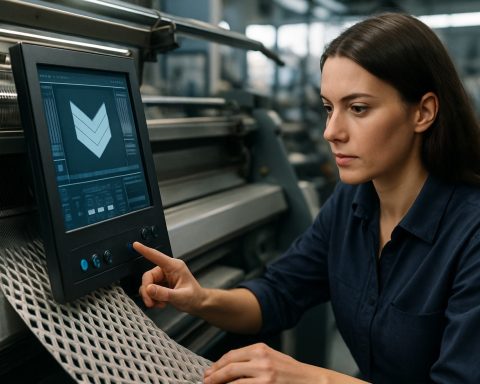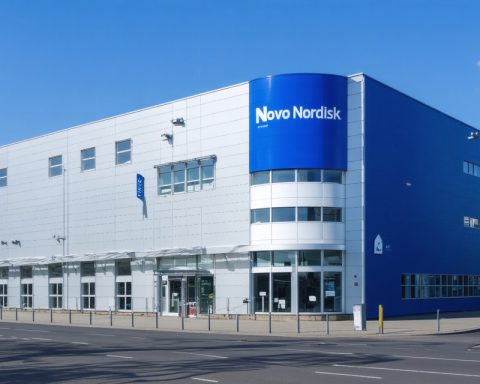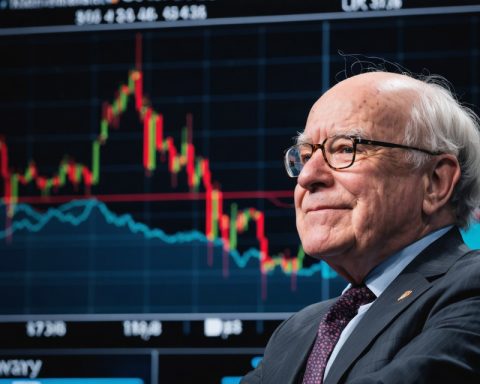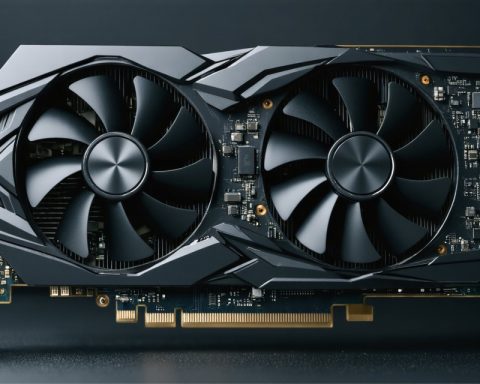- Nvidia, a leading GPU manufacturer, faces possible slowed growth despite previous successes.
- HSBC downgraded its outlook on Nvidia from ‘Buy’ to ‘Hold’, reflecting concerns about near-term prospects.
- Nvidia’s stock experienced a 5.8% dip, with shares down 26% from early 2025 peaks, indicating market apprehension.
- Fiscal 2026 projections remain optimistic, with anticipated revenue growth of 62% and a 58% increase in earnings per share.
- Concerns revolve around the decreasing pricing power of Nvidia’s flagship GPUs and modest improvements expected from new products like the Vera Rubin platform.
- Challenges include uncertainties around cloud service providers’ capital investments and AI enterprises’ long-term demand.
- Nvidia’s focus on robotics and autonomous AI systems offers potential for future growth, requiring patience and strategic execution.
- Navigating these challenges highlights the importance of combining innovation with strategic foresight in new markets.
Nvidia, the semiconductor behemoth synonymous with cutting-edge graphics processing units (GPUs), has hit a curious impasse. Despite years of soaring ambitions and record-breaking performances, recent analyses suggest the tech giant might be heading toward a period of muted growth. The unyielding march of technological advancement demands not only innovation but also strategic foresight, and for Nvidia, the current transition phase is pivotal.
HSBC, a renowned brokerage, recently adjusted its outlook on Nvidia, moving its stance to ‘Hold’ from ‘Buy’. This subtle shift marks a hesitation, not in Nvidia’s potential, but in its near-term prospects. As the company dives headfirst into the burgeoning arenas of robotics and autonomous vehicles, there lies a palpable tension between present realities and future potential. The glittering horizon of AI-driven markets is tantalizing, but it is also fraught with challenges that require careful navigation.
Market watchers have noted a 5.8% dip in Nvidia’s share price during early trading sessions, reflecting the market’s apprehensive sentiments. More telling is the descent from the company’s zenith earlier this year, with shares down by about 26% from their early 2025 highs. While Nvidia’s fiscal 2026 projections paint a promising picture with anticipated revenue growth of 62% and a commendable 58% hike in earnings per share, HSBC points to a critical issue: the dwindling strength of Nvidia’s pricing power.
The ompany’s GPUs, once the golden standard in AI technology, face increasing pressure. These flagship products, from the lauded B300 series to the cutting-edge GB300 NVL72 rack architecture, have not witnessed the expected leaps in their average selling prices. The introduction of the Vera Rubin platform, envisioned as a transformative force, now appears poised to offer incremental rather than monumental advancements until an expected upgrade in 2027.
Additional clouds loom on the horizon, with uncertainties around cloud service providers’ capital investment strategies and the long-term appetite of AI enterprises like DeepSeek. Such factors could recalibrate Nvidia’s trajectory unless navigated with precision.
Nonetheless, Nvidia’s aspiration in robotics and autonomous AI systems remains a promising avenue for growth. These sectors represent untapped wellsprings of opportunity, albeit with patience required. As these technologies evolve from nascent stages to mainstream adoption, Nvidia’s role could be instrumental, provided it synchronizes innovation with strategic timing.
Thus, at this juncture, Nvidia’s journey underscores a critical theme—innovation must be matched with a robust business strategy, particularly when treading uncharted territories. As the AI landscape continues to shift and morph, Nvidia’s next moves will undoubtedly be ones to watch.
Nvidia’s Path Forward: Navigating Challenges and Unleashing Potential
Nvidia’s Current Challenges and Opportunities
Nvidia, globally recognized for its pioneering GPUs, is experiencing a pivotal shift as it navigates uncertain market conditions. Despite ambitious growth targets in fields like robotics and autonomous vehicles, current market analyses, including those from HSBC, signal potential headwinds affecting Nvidia’s short-term prospects. This scrutiny reflects broader concerns about the company’s pricing power and key investment challenges.
Key Facts About Nvidia’s Market Position
1. Share Price Volatility: Nvidia’s share price recently dipped by 5.8%, marking a significant decline of approximately 26% from its peak earlier in 2025. This drop underscores investor trepidation about the company’s immediate financial performance and strategic direction.
2. Price Pressure on GPUs: The company’s flagship GPU lines, although technologically advanced, have not seen the anticipated growth in average selling prices. This trend suggests growing market competition and potential saturation, which could impact Nvidia’s profitability.
3. Strategic Product Platforms: Innovations such as the Vera Rubin platform were expected to revolutionize Nvidia’s offerings. However, meaningful upgrades seem to be years away, potentially slowing expected transformative impacts.
4. Market Uncertainties: Concerns exist about the investment strategies of cloud service providers and long-term AI enterprise demand, which could influence Nvidia’s growth trajectory.
Exploring Nvidia’s Prospects in Robotics and Autonomous Vehicles
Despite these challenges, Nvidia is well-positioned to capitalize on growth in emerging sectors such as robotics and autonomous technologies. The company’s foray into these areas aligns with broader industry trends towards automation and AI integration.
– Growth Potential: These sectors represent significant opportunities for Nvidia due to increasing demands for AI capabilities and computing power in autonomous systems.
– Innovation and Timing: Nvidia’s success in these fields will hinge on its ability to innovate swiftly while aligning its product offerings with market needs.
Market Forecast: AI and Semiconductor Industry Trends
Looking ahead, the AI and semiconductor sectors are poised for substantial growth:
– AI Market Expansion: As AI applications become more mainstream, demand for AI-enhanced hardware like GPUs is anticipated to rise. Nvidia’s innovations could position it as a leader if it successfully leverages its technological prowess.
– Industry Competition: Nvidia faces competition from major players and startups in AI hardware development. Staying ahead will require continued investment in R&D and strategic partnerships.
Actionable Recommendations for Nvidia
1. Strategic Partnerships: Collaborating with AI enterprise leaders and cloud service providers could enhance Nvidia’s market presence and product adoption.
2. R&D Investment: Accelerating R&D efforts, particularly for platforms like Vera Rubin, can help Nvidia maintain a competitive edge.
3. Market Diversification: Expanding into sectors with less saturation, like autonomous vehicles, can provide new revenue streams and reduce dependency on traditional markets.
Conclusion
Nvidia stands at a crossroads, with significant challenges and opportunities ahead. By focusing on strategic innovation and market alignment, the company can navigate current uncertainties and position itself for future growth. Market watchers and investors should keep a close eye on Nvidia’s next steps, which will likely shape the industry landscape.
For more insights into Nvidia’s technological developments, visit their official site:
Nvidia
















